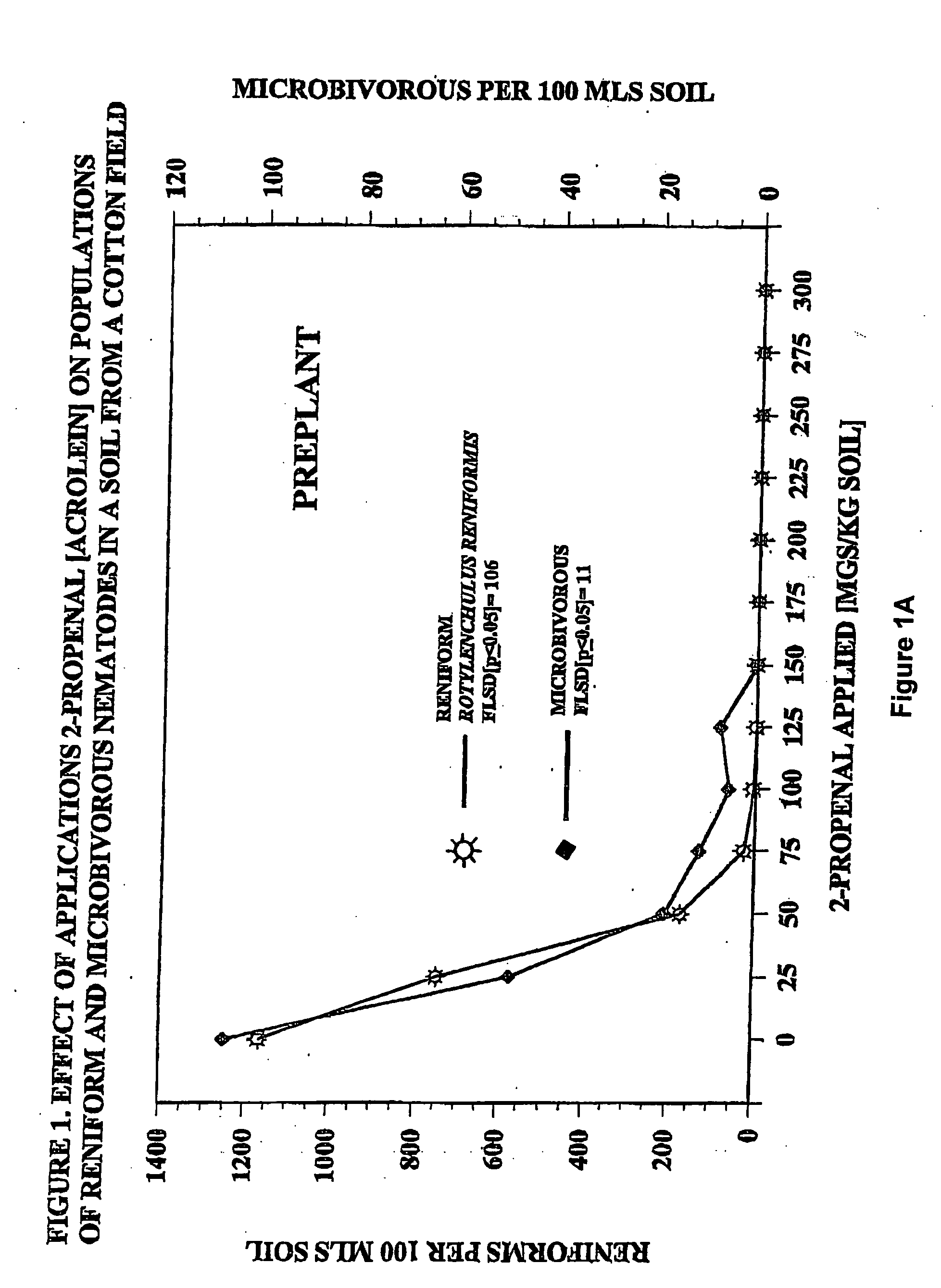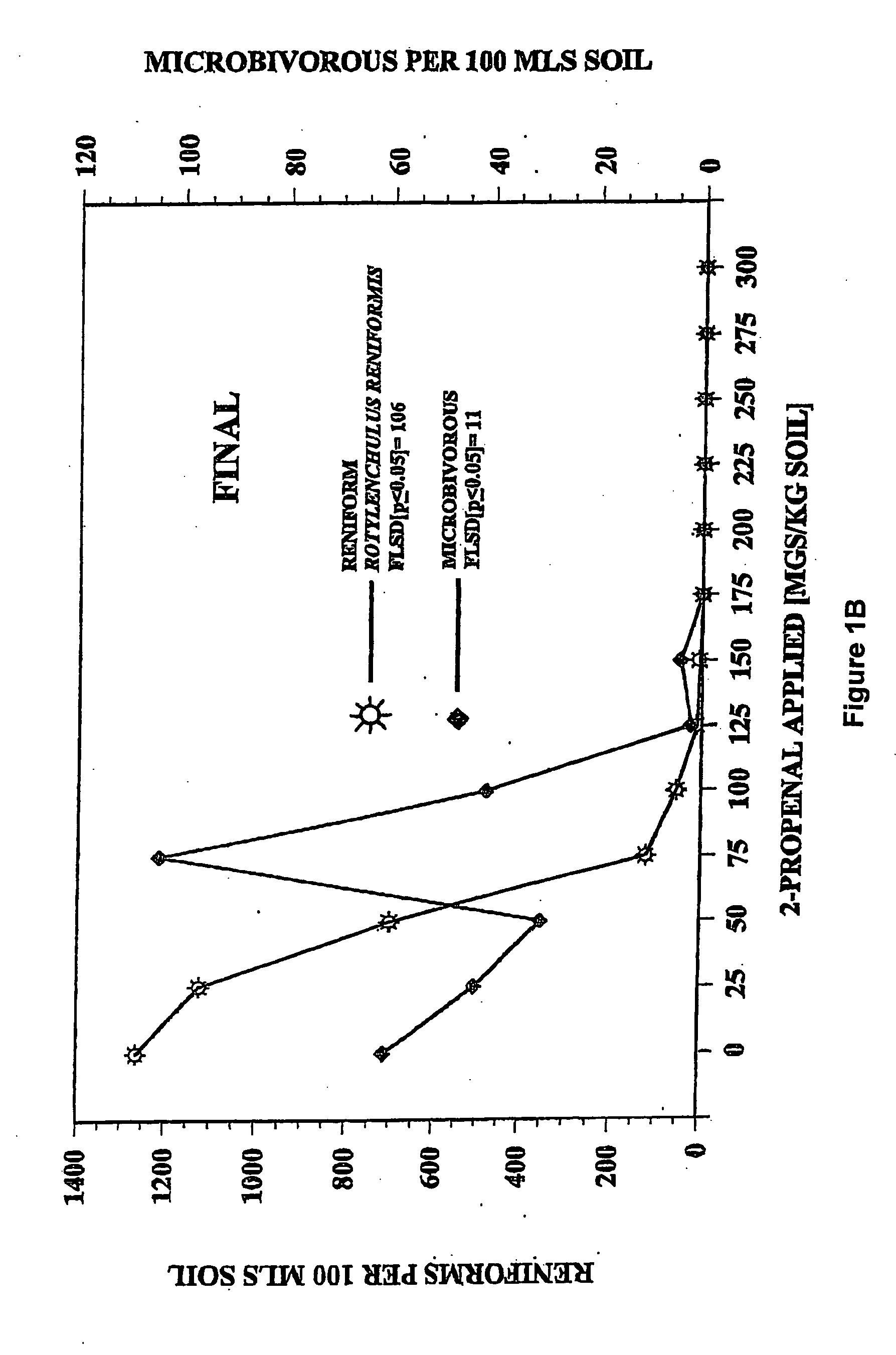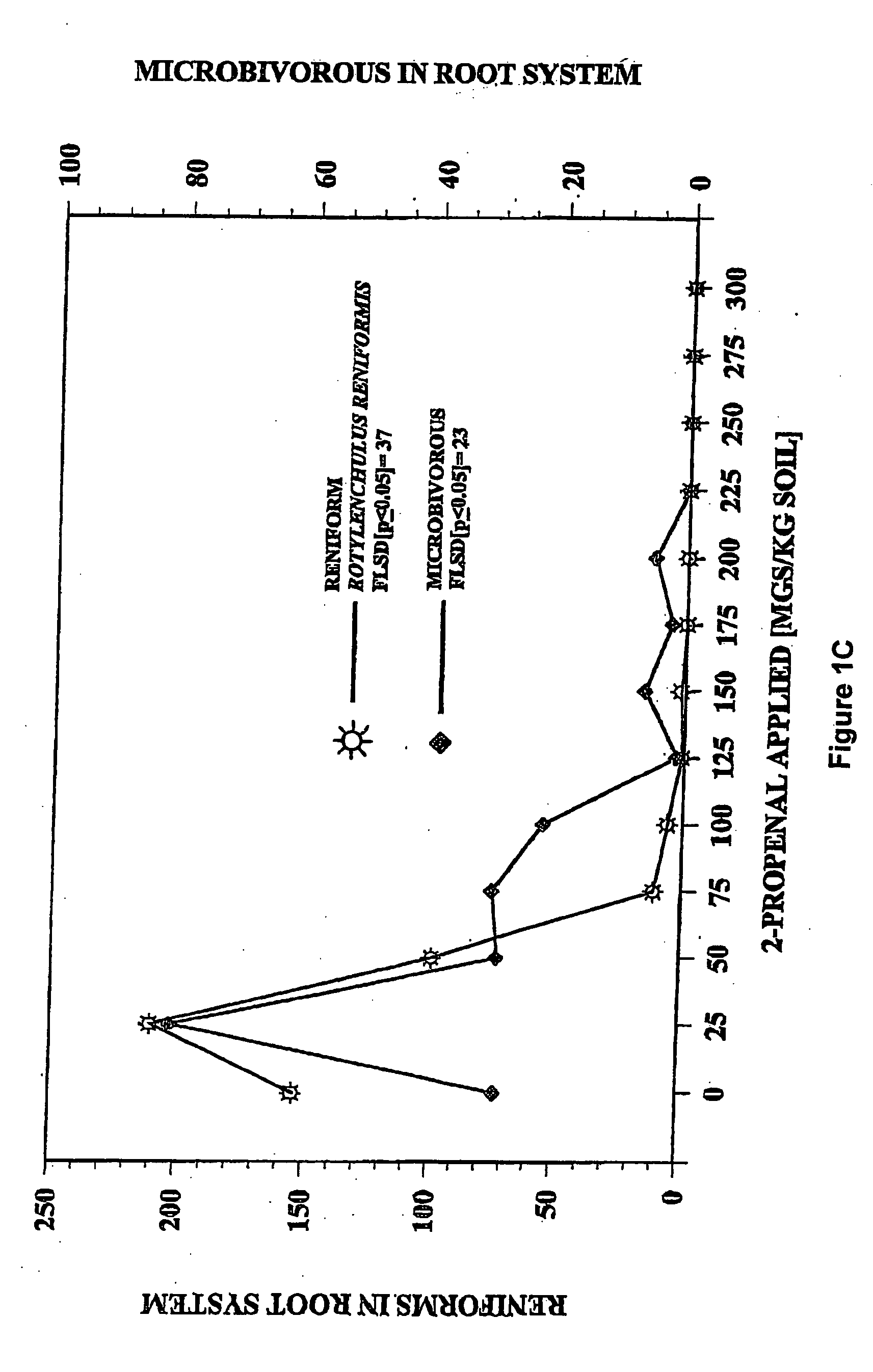2-Propenal and related enal compounds for controlling plant pests and weeds in soil
a technology of enal compounds and plant pests, applied in the field of pesticides and herbicides, can solve the problems of unintended consequences, many herbicides and pesticides are expensive, phase out, etc., and achieve the effects of enhancing the growth of plants, and effective and long-lasting herbicidal and pesticidal activity
- Summary
- Abstract
- Description
- Claims
- Application Information
AI Technical Summary
Benefits of technology
Problems solved by technology
Method used
Image
Examples
example 1
[0056] Methods and Materials
[0057] The nematicidal properties of 2-propenal (CH2═CH—CHO; acrolein), 2-butenal (CH3—CH═CH—CHO; crotonaldehyde), and trans 2-pentenal (CH3—CH2—CH═CH—CHO) were studied in greenhouse experiments with soil severely infected with the reniform nematode (Rotylenchulus reniformis). The soil was collected from a cotton field and was a sandy loam with pH 6.2, organic matter content <1.0% and cation exchange capacity <10 meq / 100 gms soil. The soil was mixed 50:50 by volume, with washed fine siliceous river sand and the mixture, here-from referred to as soil. The moist soil (50% field capacity) was apportioned in 1 Kg quantities contained in 4L polyethylene bags. The compounds were applied to the soil in the bags, and after thorough mixing the treated soil was transferred to 1 L capacity, 4-inch-diam. plastic (PVC) pots which were then covered with a polyethylene bag (1 mil) held tightly to the outside wall of the pot with a rubber band. The covered pots were pla...
example 2
[0070] This example together with the data in Table 1 includes results of a study conducted to test the affects of acrolein on tomato plant growth. The first column in Table 1 includes, from left to right the treatment number, the treatment name, the rate of application, and the unit for that rate. The treatment name includes two separate treatment ingredients for each treatment number. The top name of each treatment name lists the test additive, and the bottom listing of the treatment name lists any additional herbicide applied in that particular treatment number. For example, in treatment number 5, methyl bromide was applied with a sandea herbicide. The rate and the rate unit headings, for this study, lists the amount of application of the treatment ingredients in pounds of active ingredients per acre (lb ai / a). Column 2 of Table 1 lists a vigor rating for each tomato plant on a scale of 1 to 5, wherein a 1 rating indicates a tomato plant with very little vigor, and a 5 rating ind...
PUM
| Property | Measurement | Unit |
|---|---|---|
| Mass | aaaaa | aaaaa |
| Mass | aaaaa | aaaaa |
| Mass | aaaaa | aaaaa |
Abstract
Description
Claims
Application Information
 Login to View More
Login to View More - R&D
- Intellectual Property
- Life Sciences
- Materials
- Tech Scout
- Unparalleled Data Quality
- Higher Quality Content
- 60% Fewer Hallucinations
Browse by: Latest US Patents, China's latest patents, Technical Efficacy Thesaurus, Application Domain, Technology Topic, Popular Technical Reports.
© 2025 PatSnap. All rights reserved.Legal|Privacy policy|Modern Slavery Act Transparency Statement|Sitemap|About US| Contact US: help@patsnap.com



